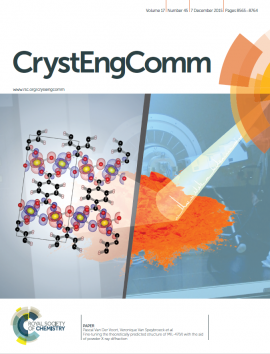Biocompatible Zr-based nanoscale MOFs coated with modified poly (epsilon-caprolactone) as anticancer drug carriers
Abstract
Nanoscale Zr-based metal organic frameworks (MOFs) UiO-66 and UiO-67 were studied as potential anticancer drug delivery vehicles. Two model drugs were used, hydrophobic paclitaxel and hydrophilic cisplatin, and were adsorbed onto/into the nano MOFs (NMOFs). The drug loaded MOFs were further encapsulated inside a modified poly(epsilon-caprolactone) with D-alpha-tocopheryl polyethylene glycol succinate polymeric matrix, in the form of microparticles, in order to prepare sustained release formulations and to reduce the drug toxicity. The drugs physical state and release rate was studied at 37 degrees C using Simulated Body Fluid. It was found that the drug release depends on the interaction between the MOFs and the drugs while the controlled release rates can be attributed to the microencapsulated formulations. The in vitro antitumor activity was assessed using HSC-3 (human oral squamous carcinoma; head and neck) and U-87 MG (human glioblastoma grade IV; astrocytoma) cancer cells. Cytotoxicity studies for both cell lines showed that the polymer coated, drug loaded MOFs exhibited better anticancer activity compared to free paclitaxel and cisplatin solutions at different concentrations. (C) 2016 Elsevier B.V. All rights reserved.

 Open Access version available at
Open Access version available at 